Book extracts in English
Page 1
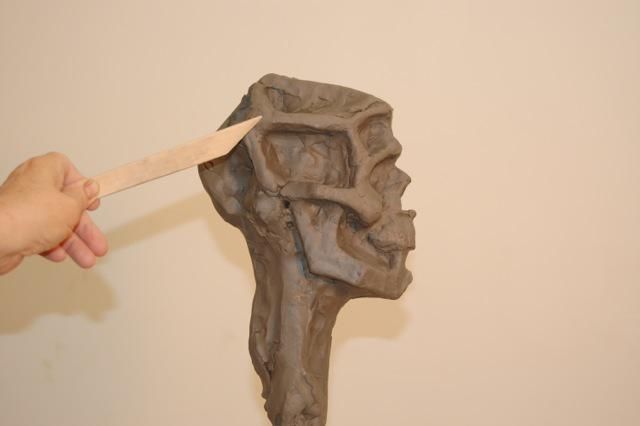
We first create the boney landmark of the skull as points and lines. Boney landmarks are visibly the closest to the surface of the face. We work from the generic skull dividing the planes of the skull into front diagonal and side planes. This same process is done from a live model but we change the geometric relationships from the generic skull to represent the skull of the model
A) Begin to work on the side using the ear hole as the stable data from which to map all other points and planes.
B) Create a measurement tool for 90 ° (by using your finger as part of the tool)
C) Use the geometry and visualize a clock " to find the hour "of points
D) then measure lengths from the ear hole to the point wanted..
Balancing
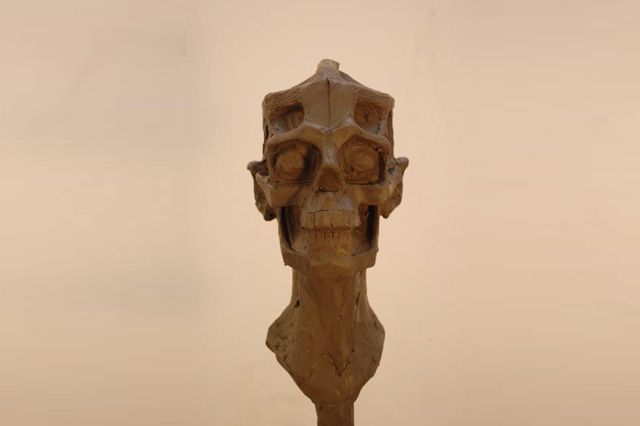
Balancing both sides is crucial. Make sure you have kept your points clear before balancing.
Reproduce the protruding points on the generic skull which you have just realized, using the same methods of measure and geometry as above. Balance your skull before moving on to the next stage.
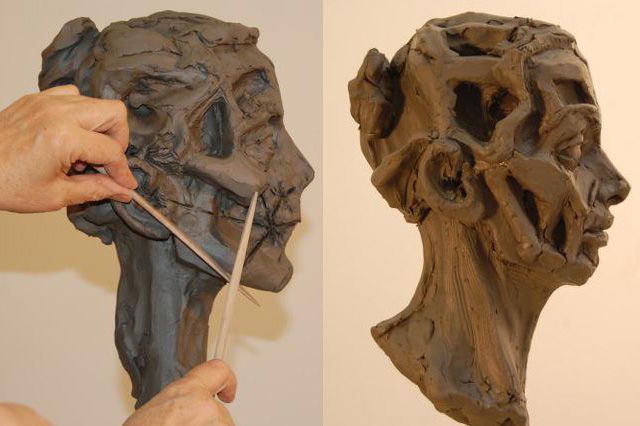
By using the geometry and measuring change the boney landmarks of the generic skull to those of the model. Use the hole of the ear as your center from which all else revolves geometrically and through measuring.
A) Start with the Zygomatic arch from the ear hole.
B) Look and change all the boney landmark.
C) Balance again from the new “model” landmarks.
D) Using the landmarks of the boney points, find the points of flesh from the side where you started, (such as the back of the nose and the back of the mouth).
E) Use this structure to structure in clay the whole side profile (including the line of hair, ears, neck etc. ...)
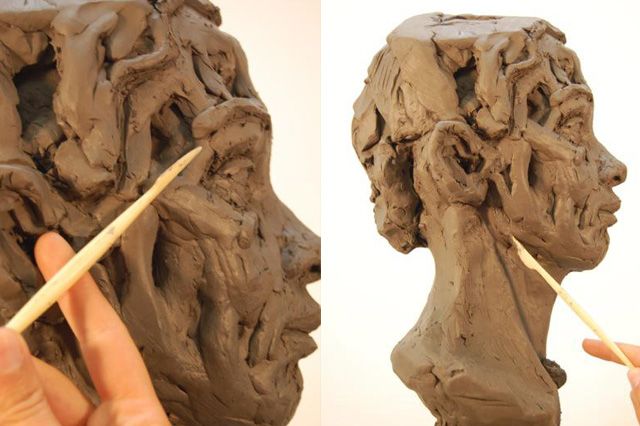
Use the geometrical relations to finish the structure of your models portrait from just the one side.
A) Do not forget to place the position of the eye of the side before starting on the front.
B) Keep all your points and your lines clearly visible so that you can see them when you move to the front.
Next…. Working from the front with a balanced “model’s” skull
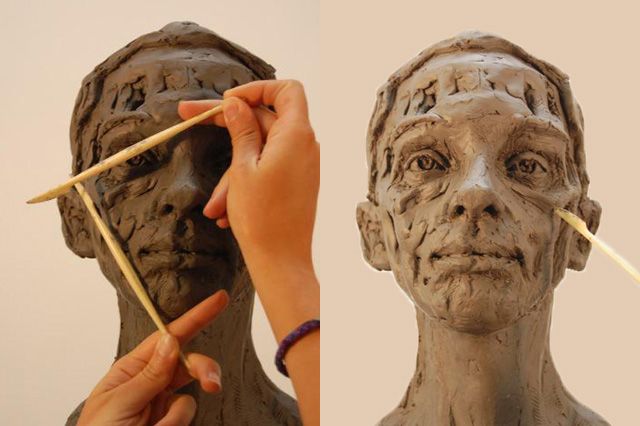
Using geometric relationships to finish the structure of your real portrait , the same way as you did with the generic skull.
A) Use the geometry to place the position of the eye from the point between eyebrows and point at the bottom of the chin.
B) Keep all your points and your lines clearly visible, so that you can see them Balance before putting the flesh on your portrait, and looking from the ¾ views.

The portrait ends as you change it to your personal artistic intentions.
I opened the mouth then changed the direction(management) of eyes to express a feeling of inspiration intentions.
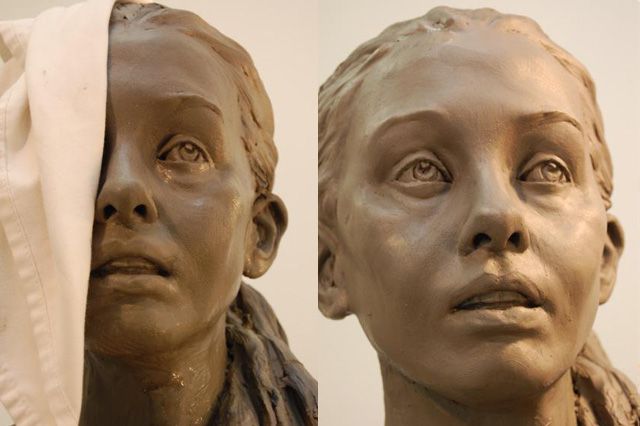
Remember the whites on either side of the iris give the eye it’s direction.
Change one eye at a time to be certain that you have the model looking where you want. .
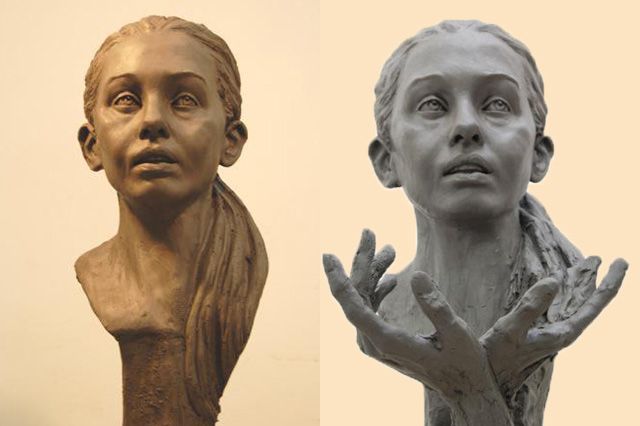
I also added the hands to complete my intention of devotion, inspiration and to represent the flowering of the Lotus Blossom.
This particular portrait is called “Lakshmi”.
Photographed in unfinished clay form.


